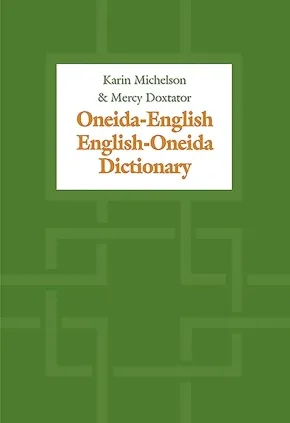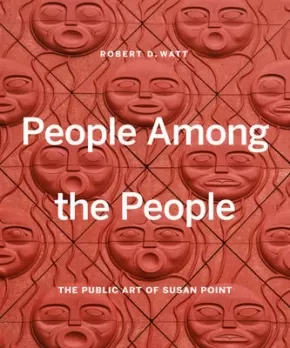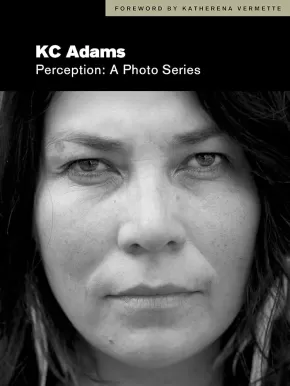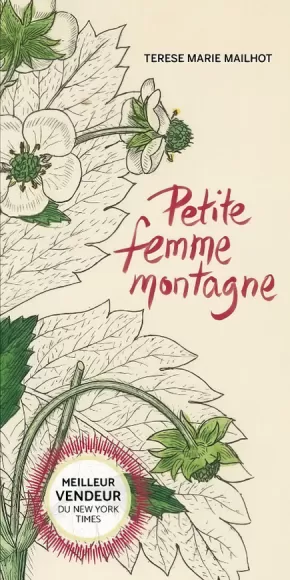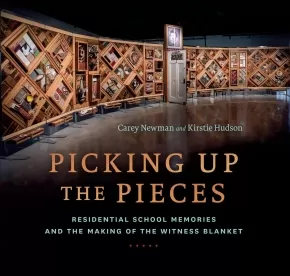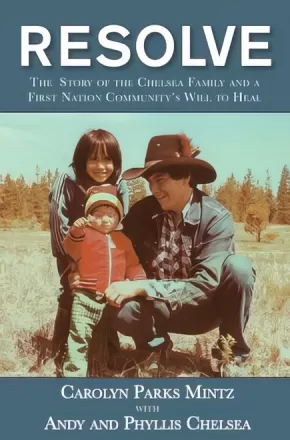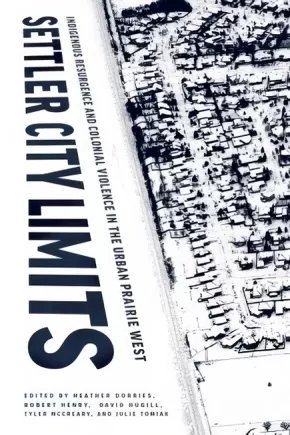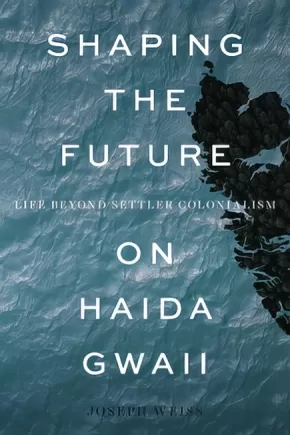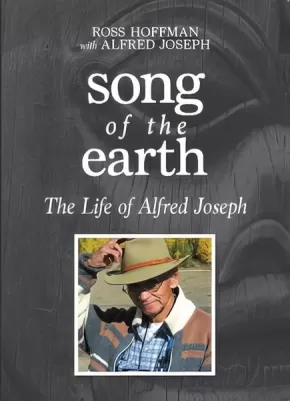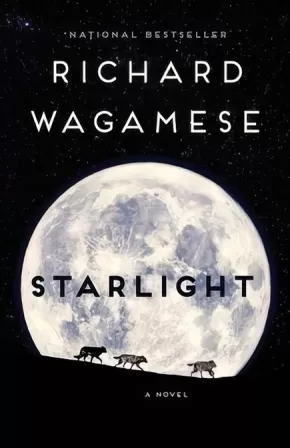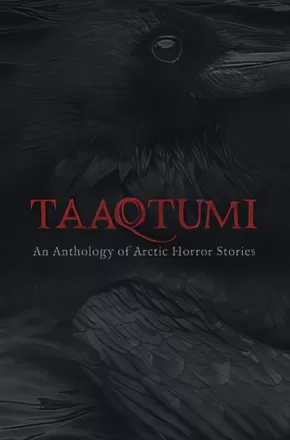
First Nations
511
-
525
of
786 Results;
Sort By
Go To
of 53
Oneida-English/English-Oneida Dictionary
$163.00
Format:
Paperback
Text Content Territories:
Indigenous Canadian; First Nations; Haudenosaunee (Iroquois); Oneida (Onyota'a:ka);
Grade Levels: University/College;
ISBN / Barcode: 9781487525170
Synopsis:
Synopsis:
Oneida is an endangered Iroquoian language spoken fluently by fewer than 250 people. This is the first comprehensive dictionary of the Oneida language as used in Ontario, where most of the surviving speakers reside.
The dictionary contains both Oneida-English and English-Oneida sections. The Oneida-English portion includes some 6000 entries, presenting lexical bases, particles and grammatical morphemes. Each entry for a base shows several forms; illustrates inflection, meaning and use; and gives details regarding pronunciation and cultural significance. The English-Oneida entries direct the reader to the relevant base in the Oneida-English section, where technical information is provided. Completing the volume is a set of appendices that organizes Oneida words into thematic categories.
The Iroquoian languages have an unusually complex word structure, in which lexical bases are surrounded by layers of prefixes and suffixes. This dictionary presents and explains that structure in the clearest possible terms. A work of enormous precision and care, it incorporates many innovative ideas and shows a deep understanding of the nature of the Oneida language.
Reviews
"The format of the entries and the amount of information provided is impressive indeed. The system of cross-references connects entries to one another in a web of lexical relationships that brilliantly displays the nature of the Oneida lexicon – these entries are treasure-troves!" Hanni Woodbury, author of A Reference Grammar of the Onondaga Language
Additional Information
1410 pages | 6.70" x 10.00"
People Among the People: The Public Art of Susan Point
$60.00
Artists:
Format:
Hardcover
Text Content Territories:
Indigenous Canadian; First Nations; Salish; Coast Salish; Musqueam;
ISBN / Barcode: 9781773270425
Synopsis:
Synopsis:
“I feel that it is important to re-establish our Salish footprint upon our lands, to create a visual expression of the link between the past and present that is both accessible and people-friendly. . . . I create unique, ‘original’ artwork that honours both my people and the diverse group of peoples from around the world who have come to live upon our lands on the Northwest Coast. My hope is that my art leaves a lasting impression on visitors, locals, and the surrounding communities.” — Susan Point
This beautifully designed book is the first to explore Susan Point's publicly commissioned artworks from coast to coast.
Susan Point’s unique artworks have been credited with almost single-handedly reviving the traditional Coast Salish art style. Once nearly lost to the effects of colonization, the crescents, wedges, and human and animal forms characteristic of the art of First Nations peoples living around the Salish Sea can now be seen around the world, reinvigorated with modern materials and techniques, in her serigraphs and public art installations—and in the works of a new generation of artists that she’s inspired.
People Among the People beautifully displays the breadth of Susan Point’s public art, from cast-iron manhole covers to massive carved cedar spindle whorls, installed in locations from Vancouver to Zurich. Through extensive interviews and access to her archives, Robert D. Watt tells the story of each piece, whether it’s the evolution from sketch to carving to casting, or the significance of the images and symbolism, which is informed by surviving traditional Salish works Point has studied and the Oral Traditions of her Musqueam family and elders.
In her long quest to re-establish a Coast Salish footprint in Southwest British Columbia and the Pacific Northwest of the US, Point has received many honours, including the Order of Canada and the Audain Lifetime Achievement Award. This gorgeous and illuminating book makes it clear they are all richly deserved.
Additional Information
208 pages | 10.17" x 12.39" | Colour photographs throughout | Hardcover
Perception: A Photo Series
$34.00
Artists:
Format:
Hardcover
Text Content Territories:
Indigenous Canadian; First Nations; Inuit; Métis;
ISBN / Barcode: 9781553797869
Synopsis:
Synopsis:
Social action art in book form, Perception: A Photo Series encourages readers to look and then look again.
Tired of reading negative and disparaging remarks directed at Indigenous people of Winnipeg in the press and social media, artist KC Adams created a photo series that presented another perspective. Called “Perception Photo Series,” it confronted common stereotypes of First Nation, Inuit and Métis people to illustrate a more contemporary truthful story.
First appearing on billboards, in storefronts, in bus shelters, and projected onto Winnipeg’s downtown buildings, Adam’s stunning photographs now appear in her new book, Perception: A Photo Series. Meant to challenge the culture of apathy and willful ignorance about Indigenous issues, Adams hopes to unite readers in the fight against prejudice of all kinds.
Reviews
"Indeed, the potential lasting impact of this collection can’t be underestimated; this is socially engaged art at its best." — Kirkus Reviews, March 2019
"KC Adams' Perception series challenges us to bridge thought and reality; emerging on the other side better having challenged ourselves to see Indigenous peoples for what they really are. We are grandparents, parents, children - and everything in between. As Adams shows through this incredible exhibition of faces and feelings, we are beautiful, whole, and complex peoples irreducible to stereotypes and slander." — Romeo Saganash (Cree, father, activist, and dreamer)
"KC Adams's Perception series absolutely captured the most devastating perceptions from the colonial mind, and the accompanying lack of knowledge about the truth of Canada's historical relationship to Indigenous Peoples. Succinctly and beautifully, KC transformed that narrative in this series. It is a prolific piece which will always be a source of inspiration for truth and reconciliation. It is unforgettable. Kichi miigwetch KC Adams!." — Tina Keeper, March 2019
"We hear the saying, “A picture can say a thousand words” quite often, but sometimes we don’t take the time to actually look at what we are seeing and what it is saying. Sometimes photographs are taken for fun, with no real meaning behind them. But there are times when a photograph is taken for a purpose, taken to deliver a message. KC Adams, with Perception, is doing just that. She is not only delivering a message, she is also making a statement in order to break down the racial prejudices and stereotypes towards the indigenous community in Canada.... From looking at the first picture that shows their reaction to what people think of them to looking at their second picture that shows their look of pure happiness coupled with their name, their tribes, and the words they would use to describe themselves is what is causing people to think twice, think differently, and spark conversation." — Leslie Trotter, NetGalley, March 2019
"I admire what KC Adams did when she kept hearing disparaging remarks and slurs against the Native peoples of Canada. As an indigenous person herself, she too, had been subjected to mistreatment and prejudice just be being someone who looks different. She was determined to find a way to get people's perceptions to change. The Native/indigenous people and their cultures were here to stay and non-Native people had to come to terms with and accept that. Adams choose to use her skill as a photographer as a catalyst to address the racism and prejudice head on.... She took a series of two photographs of the same person; one as she said a racist remark, the other as she said something positive about the person. She then put up these pictures as posters around municipal areas. The first picture was headlined with the slur said while filming it, the bottom said "Think again". The second picture (taken when she invoked a positive response in them) told who they were and some things about them. This photography series (now captured in her book Perceptions) helped people recognize their own reactions to Native peoples and realize that they were unfair and untrue.... I love when art is not only creative, but an agent for social change! Kudos, Ms. Adams! Well done!" — Kathy Fuchs, NetGalley, February 2019
"Perception is an impressive collection...an inside look into a living legend’s photography practice (I say this in no uncertain terms) and, more importantly, as Adams intended, a reminder to look past the hurt in search of a love that can bring us all home." — Lindsay Nixon, Editor-at-Large Canadian Art, author nîtisânak, Metonymy Press, March 2019
"This is an amazing portrayal of the indigenous community. The emotions displayed by each individual are clearly defined. I highly recommend this resource be placed in all libraries and used to dispel racism and discriminatory ideas." — Shelley Stefanowich, NetGalley, April 2019
Educator & Series Information
For Grades 9-12 / Young Adults
Foreword by Katherena Vermette; Critical essay by Cathy Mattes
Caution: Mature subject matter/language in some instances as this book is dealing with stereotypes and prejudice (radicalized language and derogatory terminology).
Recommended in the Canadian Indigenous Books for Schools 2019-2020 resource list for grades 10 to 12 for Art Education, Social Studies, Social Justice, and English Language Arts.
This book is part of The Debwe Series, a collection of exceptional Indigenous writings from across Canada.
Additional Information
120 pages | 6.75" x 9.00" | Hardcover | Foreward from Katherena Vermette
Petite Femme Montagne
$22.95
Format:
Paperback
Text Content Territories:
Indigenous Canadian; First Nations; Salish; Coast Salish; Sto:lo; Seabird Island;
Reading Level: N/A
ISBN / Barcode: 9782923896953
Synopsis:
Synopsis:
Petite femme montagne est un cri du coeur qui prend le lecteur à témoin et l'oblige à examiner sa propre vie. C'est livre vérité, un livre boussole qui explique comment survivre aux relations mère-fille, à la maternité, au désir, à la trahison, aux amours déçus, à la dépendance, à l'abus et à l'injustice. Terese Marie Mailhot illumine avec finesse son enfance dans une maison infestée de coccinelles sur la réserve de Seabird Island. Son père, un artiste qu'a rencontré sa mère alors qu'il était en prison est décédé dans une chambre de motel après une altercation avec un ami. Elle montre comment pour quelqu'un qui a vécu la faim, l'abus et les familles déchirées le simple confort de la vie domestique peut ressembler au paradis. Petite femme montagne est un livre nécessaire.
Educator Information
This book is available in English: Heart Berries: A Memoir
Additional Information
204 Pages
Picking Up the Pieces: Residential School Memories and the Making of the Witness Blanket
$39.95
Format:
Hardcover
Text Content Territories:
Indigenous Canadian; First Nations; Kwakwaka'wakw (Kwakiutl); Salish; Coast Salish; Sto:lo; Cheam;
ISBN / Barcode: 9781459819955
Synopsis:
Synopsis:
Every object tells a story.
Picking Up the Pieces tells the story of the making of the Witness Blanket, a living work of art conceived and created by Indigenous artist Carey Newman. It includes hundreds of items collected from residential schools across Canada, everything from bricks, photos and letters to hockey skates, dolls and braids. Every object tells a story.
Carey takes the reader on a journey from the initial idea behind the Witness Blanket to the challenges in making it work to its completion. The story is told through the objects and the Survivors who donated them to the project. At every step in this important journey for children and adults alike, Carey is a guide, sharing his process and motivation behind the art. It's a very personal project. Carey's father is a residential school Survivor. Like the Blanket itself, Picking Up the Pieces calls on readers of all ages to bear witness to the residential school experience, a tragic piece of Canada’s history.
"In the traditions of my Salish ancestors, a blanket is gifted to uplight the spirit, protect the vulnerable or honour the strong. I made this blanket for the Survivors, and for the children who never came home; for the dispossessed, the displaced and the forgotten. I made this blanket so that I will never forget -- so that we will never forget." - Carey Newman
Reviews
"Picking Up the Pieces is both a crucial record of history and an outstanding assertion of love and community. The story behind the creation of the powerful Witness Blanket project is one of great care and consideration, with residential school Survivors and their families at the centre. By sharing his own family's connection to a brutal and shameful part of Canadian history, renowned artist Carey Newman brilliantly guides us through the meticulous and thoughtful process of creating one of the most important pieces of art to exist in this country. I had the privilege of experiencing the Witness Blanket on its tour, and it was a poignant moment that will stay with me for the rest of my life. Reading how it all came together is yet another vital experience. Like the Witness Blanket itself, Picking Up the Pieces will educate and enlighten Canadians for generations to come. It's a must-read for anyone seeking to understand Canada's residential-school saga. Most importantly, it's a touchstone of community for those survivors and their families still on the path to healing." — Waubgeshig Rice, journalist and author of Moon of the Crusted Snow, March 2019
Educator Information
Themes: Indigenous Art, Reconciliation, Residential Schools, Survivor Stories, Intergenerational Trauma
Suitable for most ages (about 12 years+). Useful social studies or Indigenous studies resource for pre-teens and teens; however, it does make reference to sexual, emotional, and physical abuse and trauma.
Recommended in the Canadian Indigenous Books for Schools 2019-2020 resource list for grades 11 and 12 and as a teacher resource. Useful for these subjects: English Language Arts, Media Studies, Social Studies.
Additional Information
180 pages | 10.75" x 10.00"
Red River Girl: The Life and Death of Tina Fontaine
$24.95
Format:
Paperback
Text Content Territories:
Indigenous Canadian; First Nations; Anishinaabeg; Ojibway; Cree (Nehiyawak);
Grade Levels: University/College;
ISBN / Barcode: 9780735233935
Synopsis:
Synopsis:
A gripping account of the unsolved death of an Indigenous teenager, and the detective determined to find her killer, set against the backdrop of a troubled city.
On August 17, 2014, the body of fifteen-year-old runaway Tina Fontaine was found in Winnipeg's Red River. It was wrapped in material and weighted down with rocks. Red River Girl is a gripping account of that murder investigation and the unusual police detective who pursued the killer with every legal means at his disposal. The book, like the movie Spotlight, chronicles the behind-the-scenes stages of a lengthy and meticulously planned investigation. It reveals characters and social tensions that bring vivid life to a story that made national headlines.
Award-winning BBC reporter and documentary maker Joanna Jolly delves into the troubled life of Tina Fontaine, the half-Ojibway, half-Cree murder victim, starting with her childhood on the Sagkeeng First Nation Reserve. Tina's journey to the capital city is a harrowing one, culminating in drug abuse, sexual exploitation, and death.
Aware of the reality of missing and murdered Indigenous women and girls, Jolly has chronicled Tina Fontaine's life as a reminder that she was more than a statistic. Raised by her father, and then by her great-aunt, Tina was a good student. But the violent death of her father hit Tina hard. She ran away, was found and put into the care of Child and Family Services, which she also sought to escape from. That choice left her in danger.
Red River Girl focuses not on the grisly event itself, but on the efforts to seek justice. In December 2015, the police charged Raymond Cormier, a drifter, with second-degree murder. Jolly's book will cover the trial, which resulted in an acquittal. The verdict caused dismay across the country.
The book is not only a true crime story, but a portrait of a community where Indigenous women are disproportionately more likely to be hurt or killed. Jolly asks questions about how Indigenous women, sex workers, community leaders, and activists are fighting back to protect themselves and change perceptions. Most importantly, the book will chronicle whether Tina's family will find justice.
Reviews
“Tina Fontaine brought international attention to the tragedy of missing and murdered Indigenous women, girls, and two-spirit folks. This retelling of her life and the investigation into her death is a breathtaking account of the fight to find justice for Tina.” —Wab Kinew, Leader of the Manitoba NDP and author of The Reason You Walk
Additional Information
320 pages | 6.00" x 9.00"
Resolve: The Story of the Chelsea Family and a First Nation Community's Will to Heal
$24.95
Format:
Paperback
Text Content Territories:
Indigenous Canadian; First Nations; Salish; Interior Salish; Secwepemc (Shuswap);
ISBN / Barcode: 9781987915884
Synopsis:
Synopsis:
Andy and Phyllis Chelsea met during their years spent at the St. Joseph’s Mission School in Williams Lake, BC. Like the thousands of others forced into the church-run residential school system, Andy and Phyllis are no strangers to the ongoing difficulties experienced by most Indigenous peoples in Canada. The couple married in 1964 but brought the trauma of their mission school years into their marriage. The Chelseas’ struggle with alcohol came to an abrupt halt in 1971 when their daughter, Ivy, then aged seven, stated that she and her brothers did not want to live with their parents because of the drinking, that they would stay with their Grandmother, their Kye7e. Andy and Phyllis chose sobriety to preserve their family. This decision sparked a lifetime of activism for the couple, which included overcoming the challenges caused by Canada’s disregard for their community. Throughout the twenty-seven years Andy was Chief of the Alkali Lake Esk’et First Nation, the Chelseas worked to eradicate alcoholism and took steps to overcome the rampant intergenerational trauma that existed for the people of Alkali Lake. Their efforts, their story and the perseverance of the members of their village have inspired Indigenous groups facing similar struggles throughout the world.
Resolve: The Chelsea Story and a First Nation Community’s Will to Heal explores the harrowing, personal journey of the Chelseas. By combining personal interviews and historical records, biographer Carolyn Parks Mintz shares the Chelseas’ transition from residential schools to state-sanctioned reservations to international recognition of their activism in the face of ongoing repression. A simultaneous celebration of strength and a condemnation of systemic racism, Resolve is a personal and deeply moving story that calls for a closer look at the status of Canada’s reconciliation efforts from the Chelseas’ perspective.
Educator Information
Recommended in the Canadian Indigenous Books for Schools 2020/2021 resource list for grades 10 to 12 for English Language Arts, Social Studies, and Social Justice.
Caution: Alcoholisms, trauma, physical and sexual abuse.
Additional Information
240 pages | 6.00" x 9.00"
Settler City Limits: Indigenous Resurgence and Colonial Violence in the Urban Prairie West
$27.95
Editors:
Format:
Paperback
Text Content Territories:
Indigenous American; Native American; Indigenous Canadian; First Nations; Métis;
Grade Levels: University/College;
ISBN / Barcode: 9780887558436
Synopsis:
Synopsis:
While cities like Winnipeg, Minneapolis, Saskatoon, Rapid City, Edmonton, Missoula, Regina, and Tulsa are places where Indigenous marginalization has been most acute, they have also long been sites of Indigenous placemaking and resistance to settler colonialism.
Although such cities have been denigrated as “ordinary” or banal in the broader urban literature, they are exceptional sites to study Indigenous resurgence. The urban centres of the continental plains have featured Indigenous housing and food co-operatives, social service agencies, and schools. The American Indian Movement initially developed in Minneapolis in 1968, and Idle No More emerged in Saskatoon in 2013.
The editors and authors of Settler City Limits, both Indigenous and settler, address urban struggles involving Anishinaabek, Cree, Creek, Dakota, Flathead, Lakota, and Métis peoples. Collectively, these studies showcase how Indigenous people in the city resist ongoing processes of colonial dispossession and create spaces for themselves and their families.
Working at intersections of Indigenous studies, settler colonial studies, urban studies, geography, and sociology, this book examines how the historical and political conditions of settler colonialism have shaped urban development in the Canadian Prairies and American Plains. Settler City Limits frames cities as Indigenous spaces and places, both in terms of the historical geographies of the regions in which they are embedded, and with respect to ongoing struggles for land, life, and self-determination.
Contributors: Chris Andersen, Nicholas Brown, Elizabeth Comack, Heather Dorries, Nick Estes, Adam Gaudry, Robert Henry, David Hugill, Sharmeen Khan, Corey Laberge, Brenda Macdougall, Tyler McCreary, Lindsey Claire Smith, Michelle Stewart, Zoe Todd, Julie Tomiak
Reviews
“Settler City Limits breaks ground, shattering the powerful authoritative structures of racism that have dichotomized rural and urban space, and Indigenous peoples’ relation to these as a central force sustaining and fortifying settler colonialism.” – Heather A. Howard-Bobiwash, Associate Professor of Anthropology, Michigan State University, and Affiliated Faculty Centre for Indigenous Studies, University of Toronto
Educator Information
Table of Contents
Introduction
Part 1 Land and Politics
Part 2 Contestation, Resistance, Solidarities
Part 3 Policing and Social Control
Part 4 Life and Death
Additional Information
368 pages | 6.00" x 9.00"
Authenticity Note: Contains contributions from both Indigenous peoples and settlers.
SH:LAM (The Doctor)
$20.95
Format:
Paperback
Text Content Territories:
Indigenous Canadian; First Nations; Salish; Coast Salish; Sto:lo; Kwantlen;
ISBN / Barcode: 9781988449715
Synopsis:
Synopsis:
Meditations upon the decimation of the Kwantlen people of western Canada.
This powerful collection, all too relevant today, tells a story that needs to be told. The author writes, "This is the truth of what has happened to my people. The Kwantlen people used to number in the thousands but like all river tribes, eighty percent of our people were wiped out by smallpox and now there are only 200 of us. As a Kwantlen man, father, fisherman, poet and playwright I believe the gift of words was given to me so I can retell our stories?"
These poems tell the story of a Kwantlen man who has been given the gift of healing but is also is a heroin addict.
Educator Information
Recommended in the Canadian Indigenous Books for Schools 2020/2021 resource list for Grades 11 and 12 for English Language Arts.
Caution: Mature subject matter.
Additional Information
96 pages | 5.50" x 8.25"
Shaping the Future on Haida Gwaii: Life beyond Settler Colonialism
$32.95
Format:
Paperback
Text Content Territories:
Indigenous Canadian; First Nations; Haida;
Grade Levels: University/College;
ISBN / Barcode: 9780774837590
Synopsis:
Synopsis:
Colonialism in settler societies such as Canada depends on a certain understanding of the relationship between time and Indigenous peoples. Too often, these peoples have been portrayed as being without a future, destined either to disappear or assimilate into settler society. This book asserts quite the opposite: Indigenous peoples are not in any sense “out of time” in our contemporary world.
Shaping the Future on Haida Gwaii shows how Indigenous peoples in Canada not only continue to have a future but are at work building many different futures – for themselves and for their non-Indigenous neighbours. Through the experiences of the residents of the Haida First Nation community of Old Massett on the islands of Haida Gwaii, Joseph Weiss explores these possible futures in detail, demonstrating how Haida ways of thinking about time, mobility, and political leadership are at the heart of contemporary strategies for addressing the dilemmas that come with life under settler colonialism.
From the threat of ecological crisis to the assertion of sovereign rights and authority, Weiss shows that the Haida people consistently turn towards their possible futures, desirable and undesirable, in order to work out how to live in and transform the present. His book breaks new ground in the exploration of the relationship between time and colonialism as experienced in the day-to-day lives of an Indigenous community.
Educator Information
This book will appeal to scholars and students of Indigenous studies, particularly in anthropology, ethnography, sociology, and history. Researchers planning to work with communities will learn from the author’s reflections on conducting ethnographic fieldwork with First Nations.
This book is the result of five years of fieldwork in Old Massett and Masset with the people of the Haida First Nation.
Reviews
"Grounded in respectful experience, observation, and interviews with Haida citizens, this book provides scholars with a complex understanding and analysis of how one Indigenous community adapts to and maintains a commitment, however difficult, to imagining and enacting a futurity determined by themselves, not settler colonialism. It will be widely read in Indigenous studies circles." - Kevin Bruyneel, author of The Third Space of Sovereignty: The Postcolonial Politics of U.S.-Indigenous Relations
"An engaging, contemporary ethnography … this lively book, with its rich theoretical bases, has the potential to further reconfigure and unsettle problematic ethnographic and popular texts on the Haida, and Indigenous peoples more generally." - Brian Thom, Department of Anthropology, University of Victoria
"In his highly original, carefully written, and theoretically grounded ethnography, Joseph Weiss describes how the people of Haida Gwaii engage in envisioning future-making, an aspirational and contested process that unsettles their own temporal displacement and potential erasure within settler colonialism … Shaping the Future points in a new direction and calls for a rethinking of ethnography as a method and the future of Indigenous nations within the state."- Bruce Miller, author of Oral History on Trial: Recognizing Aboriginal Narratives in the Courts
Additional Information
244 pages | 6.00" x 9.00"
Small Game Hunting at the Local Coward Gun Club
$22.95
Format:
Paperback
Text Content Territories:
Indigenous Canadian;
Reading Level: N/A
ISBN / Barcode: 9781487001711
Synopsis:
Synopsis:
By turns savage, biting, funny, poetic, and heartbreaking, Megan Gail Coles’s debut novel rips into the inner lives of a wicked cast of characters, exposing class, gender, and racial tensions over the course of one Valentine’s Day in the dead of a winter storm.
Valentine’s Day, the longest day of the year.
A fierce blizzard is threatening to tear a strip off the city, while inside The Hazel restaurant a storm system of sex, betrayal, addiction, and hurt is breaking overhead. Iris, a young hostess, is forced to pull a double despite resolving to avoid the charming chef and his wealthy restaurateur wife. Just tables over, Damian, a hungover and self-loathing server, is trying to navigate a potential punch-up with a pair of lit customers who remain oblivious to the rising temperature in the dining room. Meanwhile Olive, a young woman far from her northern home, watches it all unfurl from the fast and frozen street.
Through rolling blackouts, we glimpse the truth behind the shroud of scathing lies and unrelenting abuse, and discover that resilience proves most enduring in the dead of this winter’s tale.
Additional Information
440 pages | 5.25" x 8.00" | Paperback
Song of the Earth: The Life of Alfred Joseph
$21.95
Text Content Territories:
Indigenous Canadian; First Nations; Dene; Dakelh (Carrier); Wet’suwet’en;
Grade Levels: University/College;
ISBN / Barcode: 9781928195054
Synopsis:
Synopsis:
When your culture is banned and your land and resources stolen, it takes a special individual not only to survive but to thrive. Grounded in the wisdom of his elders, Gisdewe Alfred Joseph wove respect, kindness and courage into his years of service to the Witsuwit’en people of northwest British Columbia. As artist, teacher, chief band councilor, house chief and a lead plaintiff in Delgamuukw-Gisdewe – one of the most important Aboriginal title cases in Canada – Alfred relied on the lessons he learned as a boy to deal with a pervasive colonial reality. In Song of the Earth, Ross Hoffman opens the feast hall doors, throwing light on what the Witsuwit’en have lost and what they have preserved since settlers came to their lands.
Written in collaboration with Alfred Joseph, Song of the Earth brings us inside the heart and mind of a man who grew up in the heart of Witsuwit’en culture and lived to see it transformed. But he was no passive observer; he initiated and participated in legal battles that have reshaped how Canada addresses its colonial past and struggles to find ways to reconcile with Indigenous nations. In the face of current Witsuwit’en attempts to block pipeline construction across their territories in northwestern BC, this book provides insight into the people standing up for the rights that Canadian courts have affirmed.
Additional Information
200 pages | 5.50" x 7.50"
Authenticity Note: Because this work is a collaboration between the author and Alfred Joseph, it has received the Authentic Indigenous Text label.
Starlight
$19.95
Format:
Paperback
Text Content Territories:
Indigenous Canadian; First Nations; Anishinaabeg; Ojibway;
Grade Levels: 12; University/College;
ISBN / Barcode: 9780771070877
Synopsis:
Synopsis:
The final novel from Richard Wagamese, the bestselling and beloved author of Indian Horse and Medicine Walk, centres on an abused woman on the run who finds refuge on a farm owned by an Indigenous man with wounds of his own. A profoundly moving novel about the redemptive power of love, mercy, and compassion--and the land's ability to heal us.
Frank Starlight has long settled into a quiet life working his remote farm, but his contemplative existence comes to an abrupt end with the arrival of Emmy, who has committed a desperate act so she and her child can escape a harrowing life of violence. Starlight takes in Emmy and her daughter to help them get back on their feet, and this accidental family eventually grows into a real one. But Emmy's abusive ex isn't content to just let her go. He wants revenge and is determined to hunt her down.
Starlight was unfinished at the time of Richard Wagamese's death, yet every page radiates with his masterful storytelling, intense humanism, and insights that are as hard-earned as they are beautiful. With astonishing scenes set in the rugged backcountry of the B.C. Interior, and characters whose scars cut deep even as their journey toward healing and forgiveness lifts us, Starlight is a last gift to readers from a writer who believed in the power of stories to save us.
Additional Information
256 pages | 5.19" x 8.00"
Starlight Tour: The Last, Lonely Night of Neil Stonechild
$24.00
Format:
Paperback
Text Content Territories:
Indigenous Canadian; First Nations; Anishinaabeg; Ojibway; Saulteaux;
Grade Levels: 12; University/College;
ISBN / Barcode: 9780735277502
Synopsis:
Synopsis:
A teen's suspicious death, a shocking police cover-up and a mother's search for truth: this landmark investigation into justice and Canada's Indigenous people is re-issued and updated here for the first time in over a decade.
In 1990, on a brutally cold night, 17-year-old Neil Stonechild disappeared from downtown Saskatoon, last seen in police custody. His frozen body was found three days later in a field outside town. Though his mother pressed for answers, a cursory investigation pinned the blame on the teen himself, dead by alcohol and misadventure. Only in 2000, when two more men were found frozen to death, and a third survived his "starlight tour" at the hands of police, did the truth about Stonechild's fate begin to emerge. Soon one of the country's most prominent Indigenous lawyers was on the case, and an open secret was secret no more.
With exclusive co-operation from the Stonechild family, lawyer Donald Worme, and others, Starlight Tour is an engrossing portrait of rogue cops, racism, obstruction of justice and justice denied, not only to a boy and his family but to an entire nation.
Reviews
“For justice junkies like myself, this is a deeply engrossing account…. Should be compulsory reading for Canadian police recruits from sea to shining sea.” –William Deverell, The Globe and Mail
“The Stonechild story is ably captured by veteran CBC journalists Susanne Reber and Robert Renaud in a thoroughly researched, deftly written work…. A powerfully written, meticulously researched work with a cinematic feel, which should be on reading lists for students of Canadian history, journalism or law enforcement.” –Toronto Star
“The suspenseful and meticulous account of a very real and dark chapter in Canada’s modern history.” –TIME (Canada)
Additional Information
448 pages | 6.04" x 8.98"
Taaqtumi: An Anthology of Arctic Horror Stories
$19.95
Format:
Paperback
Text Content Territories:
Indigenous Canadian; First Nations; Inuit;
Grade Levels: 12; University/College;
ISBN / Barcode: 9781772272147
Synopsis:
Synopsis:
“Taaqtumi” is an Inuktitut word that means “in the dark”—and these spine-tingling horror stories by Northern writers show just how dangerous darkness can be. A family clinging to survival out on the tundra after a vicious zombie virus. A door that beckons, waiting to unleash the terror behind it. A post-apocalyptic community in the far North where things aren’t quite what they seem. These chilling tales from award-winning authors Richard Van Camp, Rachel and Sean Qitsualik-Tinsley, Aviaq Johnston, and others will thrill and entertain even the most seasoned horror fan.
Educator & Series Information
Includes stories from northern Indigenous authors.
This book is part of the Taaqtumi series.
Additional Information
260 pages | 6.00" x 9.00" | b&w illustrations
Sort By
Go To
of 53

